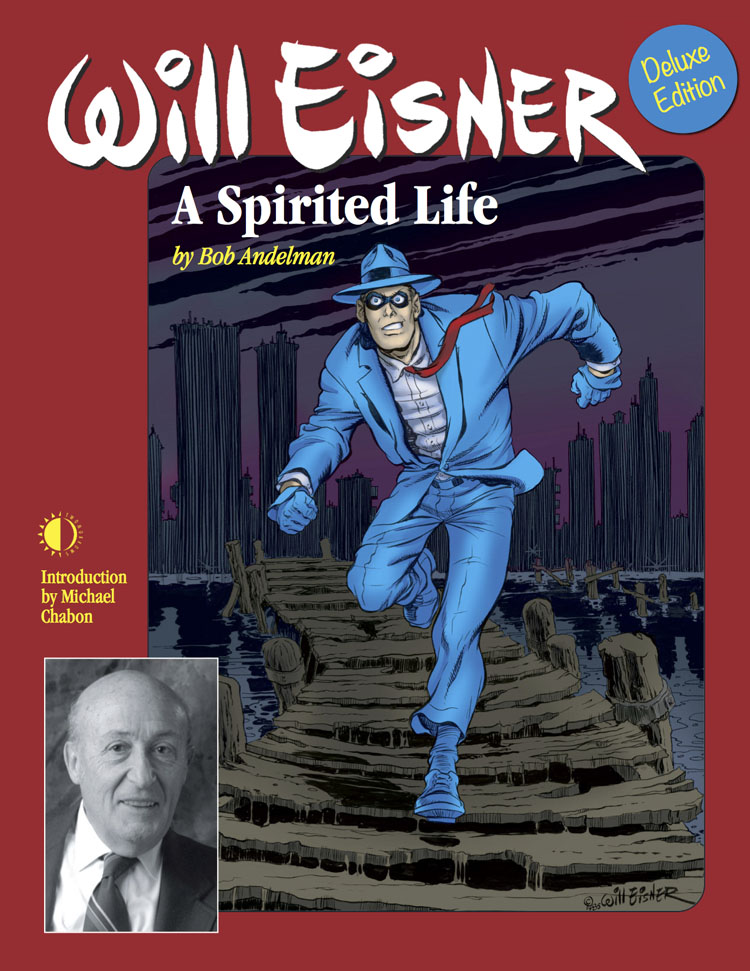
By Tom Spurgeon The Comics Reporter
Posted September 17, 2007
I don’t know that I understand Will Eisner, and I’m not sure I ever will. Eisner was an always-potent cartoonist with one acknowledged pulp masterpiece series (The Spirit) to his credit and a variety of ambitious works of varying lengths on his resume that, unlike the oeuvre of most artists regardless of form, all came in the third act of a long and fruitful life. It doesn’t help matters that a lot of what I read about Eisner fails to match up to the Eisner I observed and the Eisner whose work I continue to experience first-hand. For example, in his introduction to Life, In Pictures, Scott McCloud talks of Eisner’s being inspired by the work of younger cartoonists. This is a pretty standard line about Eisner. I’m sure it’s true. I’m not certain it matters.
The problem is I’ve never been able to see a post-War cartoonist’s influence in Eisner’s work. Will Eisner’s late-period comics settled onto the page with a certainty of style that seemed to care less if Bernie Krigstein ever put to pen to paper, let alone Spain Rodriguez or Mark Beyer. I’m sure Eisner must have appreciated much of what he saw in his extended return to cartooning, but, as little if any in the way of modern comics found its way through his brush and onto the page, I can’t be certain any of it found a place near his creative heart. McCloud pretty much confirms Eisner’s take on newer work when he talks about Eisner’s decision not to let it all hang out like Crumb, or to consider a more detailed, expansive version of the work that became The Dreamer. When it came to others’ comics, the explosion of expressiveness that came four and five decades after he literally first set up shop, Eisner seemed a happy witness more than a passionate convert, a man who appraised newer opportunities for artistic expression rather than gave himself over to them.
Will Eisner
Life, in Pictures
Autobiographical Stories
Introduction by Scott McCloud
Publication Date: October 8, 2007
An intimate self-portrait of the American icon Will Eisner, and a chronicle of the career that launched a new art form.
In what will be the closest thing Eisner fans will see to an autobiography, the great master and pioneer of American graphic arts presents the most intimate and personal perspective yet on his life as a writer, a professional, and an artist. “The Dreamer” and “To the Heart of the Storm” describe Eisner’s gritty early life and career, while “The Name of the Game” chronicles a personal history of his wife’s family. Finally, two shorter pieces illuminate the bookends of a legendary career: “The Day I Became a Professional” —which will appeal to any hopeful young artist—describes Eisner’s first rejection from a potential publisher, and “A Sunset in Sunshine City” provides a poignant portrait of Eisner in old age. The book features famous characters from the world of comics (under pseudonyms, of course) and other historical figures and family members, all drawn with Eisner’s characteristic mastery and technique.
Brooklyn-born Will Eisner, creator of Sheena, Queen of the Jungle and The Spirit, pioneered the graphic novel with A Contract With God. He is one of the greatest legends of twentieth-century comic art.
